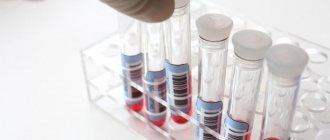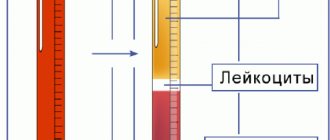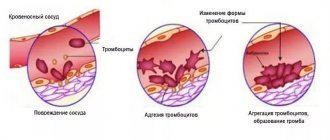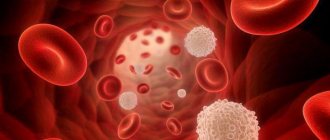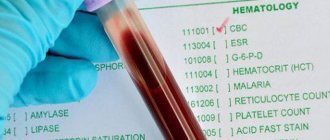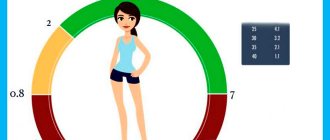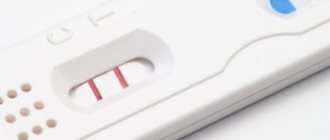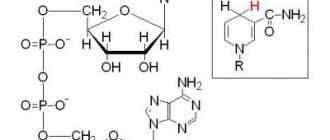Uric acid is formed in the liver and is microscopic crystals of sodium salts. By itself, it is not toxic, but when it enters the blood plasma, this substance undergoes oxidation and helps remove excess nitrogen from the body. The kidneys are responsible for removing waste products, including uric acid.
Normally, uric acid is evacuated along with urea, but if malfunctions occur in the liver or kidneys, salts accumulate and its concentration in the body increases. There can be several reasons for hyperuricemia: from errors in diet to serious organic pathology.
Symptoms
In the early stages, elevated uric acid levels may not show up. The symptom is detected only during laboratory diagnostics.
Important! In women, the indicator should not exceed 300 µm/l, in men – 400 µm/l. After 60 years, the upper limit of normal increases to 430 in women and 480 in men.
A long process gives the following symptoms:
- joint pain (arthralgia);
- deformation of the thumb of the lower extremities (one or both);
- nodules (tophi) on the skin;
- plaque;
- hyperemia of the skin in the area of the elbow, knee, ankle joints;
- increased blood pressure, heart rhythm disturbances;
- increased fatigue;
- decrease in daily diuresis.
The picture is complemented by manifestations of the underlying disease.
Causes of increased uric acid
According to statistics, hyperuricemia occurs less frequently in females, which may be due to the effect of estrogen on the excretion of uric acid.
Deviations from the norm are possible when:
- nutritional disorders: excessive consumption of protein foods of animal origin, fried, smoked foods, canned food, sweets;
- practices of long-term fasting;
- exhausting physical activity;
- alcohol abuse.
Important! Excess urate can be caused by surgery, burns, or long-term use of antihypertensive diuretics.
The causes of a pathological increase in uric acid can also be:
- acute infectious diseases: lobar, pneumonia, scarlet fever, advanced form of tuberculosis;
- chronic renal pathology: diabetic nephropathy, glomerulonephritis, amyloidosis;
- hepatitis and biliary dyskinesia;
- skin diseases: eczema, psoriasis;
- some malignant neoplasms;
- violation of water-salt metabolism - metabolic acidosis;
- neurological pathology: transistor ischemic attack, Alzheimer's disease.
According to Eastern doctors, impaired purine metabolism is a consequence of an energy imbalance, an “outraged” Bile dosha.
The activity of a “hot” constitution occurs as a result of negative emotions, low self-esteem, alcohol abuse, and physical inactivity.
Drug therapy
All medications are used strictly as prescribed by a doctor and under his supervision, with regular measurements of acid levels in the blood and urine (see medications for gout).
Diuretics
Accelerate the elimination of acid by the body through urine. Since some of them increase the concentration of uric acid in the blood and are also contraindicated in a number of pathologies (gout and others), the prescription of drugs from this group is strictly individual and is carried out in a short course with monitoring of blood and urine parameters.
Allopurinol
Inhibits the synthesis of uric acid in the liver by inhibiting the enzyme xanthine oxidase. The treatment is long-term (2-3 months) and requires strict adherence to the frequency of administration. Analogs - Milurit, Zilorik, Foligan, Allopur, Prinol, Apurin, Atizuril, Goticur, Uridoside, Xanthurat, Uriprim.
Benzobromarone
A drug that affects kidney function. It has a uricosuric effect, inhibiting the absorption of acid in the proximal renal tubules, as well as inhibiting enzymes involved in the synthesis of purines. Analogues - Khipurik, Normurat, Dezurik, Exurat, Azabromaron, Maksurik, Urikozurik, Urinorm.
Sulfinpyrazone
Increases the secretion of acid through the urinary system, especially in the initial stages of gout treatment. Analogues - Anturidin, Pirocard, Enturan, Sulfazon, Sulfison.
Etamide
Inhibits the reabsorption of uric acid in the kidney tubules, thereby reducing its concentration in the blood.
Folk remedies
Decoctions of birch buds, nettles and lingonberry leaves are effective, which should be taken 1 glass twice a day for a month.
Possible complications
Elevated levels of uric acid over a long period of time risk transforming into serious diseases:
- Gouty arthritis. An inflammatory pathology manifested by the deposition of urate crystals in the joints and kidneys. The condition is manifested by joint deformation and severe pain. Attacks of gout are accompanied by renal colic, fever, and chills.
- Salt deposits in the kidneys lead to nephropathies of varying severity, and ultimately to acute renal failure.
- Impaired purine metabolism leads to metabolic disorders in the body as a whole. Diabetes mellitus, cardiomyopathies with heart rhythm disturbances (atrial fibrillation), and hypothyroidism may develop.
- Toxicosis of pregnant women. An increased level of uric acid throughout pregnancy gives a severe picture of toxicosis: debilitating nausea, vomiting, lack of appetite, swelling of the legs, and fatigue.
Positive effects of hyperuricemia
Paradoxically, a high level of purine metabolic product in the blood, according to a number of researchers, has a beneficial effect on the body and allows the correction of some pathological conditions:
- Numerous studies from the 60-70s. confirmed a higher level of intelligence and reaction speed in patients with acute hyperuricemia. The chemical structure of the acid is similar to trimethylated xanthine caffeine, and as a result, it is believed to be capable of increasing performance.
- Increased acid levels promote longevity by acting as an antioxidant that blocks peroxynitrite, superoxide, and iron-catalyzed oxidative reactions. Transfusion of uric acid enhances the antioxidant activity of blood serum and improves endothelial function.
- Uric acid is a powerful neuroprotector, inhibitor of neuroinflammation and neurodegeneration, reducing the risk of Parkinson's disease and Alzheimer's disease.
However, such a positive effect is observed with an acute increase in acid in the blood. Chronic hyperuricemia leads to endothelial dysfunction and promotes the development of the oxidative process.
Descriptions of types of diseases
Disorders of purine metabolism and increased levels of uric acid in a biochemical blood test can be observed in the following diseases:
Rheumatic diseases
In gouty arthritis and rheumatism, the excretory function of the kidneys suffers due to excess amounts of uric acid. The body is unable to utilize processed waste, so it accumulates it in the most optimal places. Gouty tophi, clots of uric acid crystals in soft tissues, are most often localized in the subcutaneous tissue above the joints of the hands and feet, on the distal edges of the ears.
Cardiovascular diseases
Diffuse atherosclerosis, persistent arterial hypertension, and coronary heart disease are characterized by pronounced changes in the lipid profile. High cholesterol and low-density lipoproteins negatively affect the functionality of the liver, which ultimately leads to disturbances in its functioning. Hyperuricemia in atherosclerosis remains asymptomatic for a long time, and therefore gives more serious complications later.
Endocrinological diseases
- Hypoparathyroidism (parathyroid insufficiency) is accompanied by an increased calcium content, which, in tandem with urate crystals, is a powerful substrate for the formation of nephrolites.
- Diabetes mellitus and metabolic syndrome. Impaired metabolism entails not only hormonal hyperglycemia and cholesterolemia, but also high levels of uric acid.
Blood diseases
Hemolytic anemia, leukemia, polycythemia have a common feature - increased blood viscosity, which is the result of an increase in the quantitative value of purines.
Deviation from normal indicators in a larger direction
A condition characterized by increased uric acid levels is called hyperuricemia. If a person is healthy, it can be caused by intense physical activity, poor nutrition, or diets.
Some foods can also provoke the development of hyperuricemia:
- chicken meat;
- too fatty fish;
- broths;
- canned fish and meat;
- smoked dishes;
- liver;
- cocoa;
- black chocolate;
- strong coffee;
- sugar;
- beans and peas;
- bananas;
- dried fruits;
- cabbage;
- broccoli;
- mushrooms;
- spinach.
You can also add alcoholic drinks to this list, such as beer and wine.
The level of uric acid also increases with the development of serious internal diseases:
- infections in the acute stage. It could be tuberculosis, scarlet fever, etc.;
- neoplasms in organs, leukemia, lymphoma;
- kidney diseases, which are characterized by problems with the excretion of uric acid, for example, polycystic disease;
- cirrhosis and inflammation of the liver and bile ducts;
- diabetes;
- malfunction of the thyroid gland;
- overweight;
- vitamin B12 deficiency;
- some skin diseases, such as psoriasis;
- hives;
- lupus erythematosus;
- severe toxicosis during pregnancy;
- preeclampsia or gestosis.
Among other things, the development of hyperuricemia is caused by taking certain medications and alcohol poisoning. How to reduce the amount of uric acid?
There are several ways:
- Limit or even completely eliminate the consumption of first courses that contain fatty broths or shelf-stable products, such as smoked meats.
- It is better to boil meat rather than fry it.
- You should not eat asparagus, peas and other foods that cause an increase in uric acid levels in their raw form. They need to be boiled or stewed.
- Eliminate cocoa and chocolate from your diet.
- Reduce the amount of tea and strong coffee, as well as alcoholic drinks. The same goes for kvass and sour fruit and vegetable juices.
- If a woman's body suffers from excess weight, she should change her diet and switch to proper nutrition.
- Don't forget about your drinking regime. It is recommended to drink at least 2 liters of clean water every day. You can also drink juice, but not more than 2 glasses per day.
If there are no contraindications, you can turn to traditional medicine. Before using them, you should consult your doctor.
There are several recipes:
- Take 1 cup of oats, pour 1 liter of cold water. Place on low heat and let it boil. Cook until about a quarter of the water has evaporated. Before use, oatmeal broth can be mixed with cream or honey. Drink half a glass (125 ml) three times a day.
- To prepare a medicine according to another recipe, you will need 5 bay leaves, 1 tbsp. l. honey and half a lemon. So, the bay leaf needs to be filled with half a liter of just boiled water. After boiling, cook for 10 minutes, then strain. Add honey and freshly squeezed lemon juice to the broth. From this amount of ingredients a single dose is obtained. The decoction must be drunk before meals. The course of treatment is 2 weeks. After a break of the same duration, it can be repeated.
If a balanced diet and traditional medicine do not help, your doctor may suggest taking medications. Self-medication in this case is dangerous. It's better to trust the specialists.
Diagnostics
Western doctors use the following diagnostic methods for elevated uric acid:
- Clinical blood test. Focus on erythrocyte sedimentation rate (ESR) to detect inflammation.
- Blood chemistry. The level of uric acid is determined. Normally, blood is drawn from a vein on an empty stomach. At the same time, the condition of the kidneys is determined - urea and creatinine levels are examined.
- Blood test for sugar and calcium.
- Clinical urine analysis. Crystals of salts are detected - urates, oxalates.
For further studies, instrumental methods can be used: X-ray examination, ultrasound of the abdominal organs.
Diagnosis by eastern healers includes a survey of the patient with a detailed collection of complaints and an examination.
In addition to traditional methods, Tibetan medicine carries out mandatory pulse diagnostics, which makes it possible to determine in which organ the pathological changes primarily appeared.
The nature of the pulse provides information about the state of the internal organs, makes it possible to identify the degree of disturbance of a particular constitution, and determine the type to which the disease belongs - “heat” or “cold”.
Analysis for hypouricemia and factors influencing its result
Compliance with all recommendations - minimal distortion of results
An analysis of the amount of acid in the blood is carried out both for healthy people, in order to identify possible diseases, and for patients with chronic metabolic disorders - gout, diabetes, urolithiasis, etc. To obtain a reliable result, you must adhere to the following rules:
- eight hours before the intended blood donation, you must exclude all high-protein foods from your diet;
- do not drink alcohol or take any medications during the day before the test;
- You must donate blood on an empty stomach;
- Avoid physical activity before collecting material;
Blood for research is taken from a vein. The analysis results are ready the next day. If the normal values are reduced, the doctor prescribes an additional test. If there is a constant deviation from the norm, the attending physician conducts a full examination of the patient to make a diagnosis.
The following factors may affect the results of the analysis:
- taking hormonal medications (for example, those containing estrogens and corticosteroids);
- diuretics;
- unbalanced diet low in protein;
All these factors must be excluded before conducting research.
Prevention for hyperuricemia
Treating a disease is much more difficult than preventing it. By following simple recommendations, you can avoid the problem of imperfect purine metabolism:
- Dosed physical activity. Daily morning exercises, walking in the fresh air, and swimming are useful.
- Diet. Try to exclude unhealthy foods, pickles, and limit proteins.
- Water with the addition of lemon slices helps eliminate the accumulation of salts.
- Preventive diagnostics: it is advisable to take a blood test a couple of times a year to determine uric acid.
Tibetan healing methods
Western medicine doctors use a number of medications to treat hyperuricemia, which have side effects and are contraindicated for certain concomitant diseases (peptic ulcer disease).
Tibetan medicine offers a gentle and yet effective approach to the treatment of hyperuricemia. The treatment does not require taking pills, injections, or IVs. Eastern medicine does not use a scalpel; surgery is not required.
Doctors at the Naran Clinic use an integrated approach to therapy:
- correction of eating habits;
- physiotherapeutic procedures;
- correction of the patient’s lifestyle;
- cleansing the body with natural preparations (herbal medicine).
Both allopaths and Tibetan doctors are of the opinion about the importance of diet for high uric acid.
The patient should exclude or extremely limit the consumption of foods rich in purines, such as:
- meat of young animals (lamb, veal);
- offal;
- sausages;
- seafood and fish (salmon, tuna, trout, perch, herring, pike perch);
- early spring greens;
- flour;
- canned foods;
- chocolate;
- dairy products;
- mushrooms;
- nuts;
- legumes;
- cold drinks;
- coffee;
- alcohol.
Elimination of the root cause of the painful condition occurs through therapy using the following methods:
- Stone therapy. Stone massage helps strengthen the nervous system, increases stress resistance, and warms the body.
- Acupuncture. Performs the function of an anesthetic, acting on bioactive points. Activates blood circulation.
- Hirudotherapy. Improves the properties of blood, renewing its cells. Fights blood viscosity.
- Moxotherapy (cauterization with a wormwood cigar) eliminates the cold of inflamed kidneys.
- Manual therapy. In case of prolapse of the kidneys or other imbalance, it restores their anatomical balance.
- Acupressure. Increases blood circulation to affected organs, fights vasospasm.
- Phytotherapy. The doctor will prepare a collection of ecological herbs to improve metabolic processes, remove excess purines, and dissolve already formed salt deposits.
This is not the entire range of assistance offered by Eastern healers. Tibetan medicine specialists will help you draw up the necessary plan of procedures, and an individual approach to the problem will guarantee its speedy solution.
What does leveling up mean?
In a healthy person, hyperuricemia is caused by increased physical activity, prolonged fasting or a strict diet. The level of uric acid in the blood also depends on what we eat. It is higher, the more protein-rich foods there are in the diet. First of all this:
- chicken, red meat, fatty fish (halibut, sea bass, herring, sardines), rich meat and fish broths, canned food, smoked meats; salted fish and meat; liver;
- cocoa (the highest level of purines 1900 mg per 100 grams of product); dark chocolate; coffee; sugar and fructose;
- legumes;
- some fruits and dried fruits (bananas, dried apricots, dates).
Rich in proteins and sodium salts are puff pastry products, mushrooms, sorrel and spinach, cabbage, cauliflower and broccoli, and celery root. Kvass, sour juices and fermented milk products do not contain purines, but they acidify urine. Alcoholic drinks also increase the level of uric acid, especially beer and wine - alcohol increases the excretion of fluid from the body.
A uric acid test helps to suspect or accurately diagnose serious diseases and pathological conditions. Some of them are causes of hyperuricemia, others indicate that salt deposition has led to health problems:
- acute infections (tuberculosis, pneumonia, scarlet fever);
- leukemia, lymphoma, other tumor diseases;
- kidney diseases, due to which they cannot fully remove uric acid (polycystic disease, nephropathies, hydronephrosis), cirrhosis of the liver, inflammation of the liver and bile ducts;
- diabetes, thyroid disease;
- obesity;
- B12 deficiency anemia (lack of this vitamin in the body);
- chronic eczema;
- psoriasis and psoriatic arthritis;
- hives;
- lupus erythematosus;
- severe toxicosis of pregnancy;
- preeclampsia;
- Avoid soups with meat, chicken, fish or mushroom broth, borscht and fish soup, canned food, shelf-stable meat and fish products - smoked and salted.
- Keep in mind that stewed and fried meat contains more purines than boiled meat, and the meat of young animals (chicken, veal, lamb) contains more purines than regular chicken, beef or lamb.
- Avoid eating asparagus, green peas and other purine-rich vegetables raw. Boiled or stewed, they contain less purines. Avoid cocoa and chocolate.
- Do not abuse alcohol; drink less strong tea and coffee. Limit the consumption of drinks that acidify urine - kvass, sour juices.
Doctors advise obese people with excess uric acid levels to normalize their body weight. Include in your diet:
- boiled lean meat, boiled or stewed fish;
- eggs. There are no purines in the egg white, and very little in the yolk;
- vegetables from the “safe” list (eggplant, beets, potatoes, onions, bell peppers, cucumbers and tomatoes) and vegetable soups;
- “safe” fruits and berries (pears, apples, cherries, blueberries, apricots, peaches, limited grapes, oranges);
- skim milk, low-fat cottage cheese and kefir;
- porridges from different cereals.
If you have hyperuricemia, you need to drink more: at least 2-3 liters of still mineral water daily. Juices (but not more than 1.5-2 glasses a day), compotes, and rosehip decoctions are also useful.
Folk remedies
With the deposition of salts, fresh juice from celery root (2 teaspoons three times a day) and a slimy decoction of oats help. A glass of grain is poured with a liter of water and boiled until a quarter of the liquid has evaporated, drink half before meals three times a day, with cream or honey.
A more complex composition of the medicinal decoction is made from bay leaves, honey and lemon. Pour half a liter of boiling water over five bay leaves, boil for 10 minutes. Strain, mix a tablespoon of honey into the broth and squeeze half a lemon into it. This portion is drunk the day before meals: in small sips or through a straw. Treatment lasts two weeks, then a two-week break, and the course is repeated.
Drug treatment
If the level of uric acid in the body is very high, it cannot be reduced only by diet and folk remedies. After the examination, the doctor may prescribe medications and nutritional supplements to the patient.
The removal of uric acid is facilitated by some diuretics, the type and dose of which are selected individually, and by the herbal preparation FullFlex®. The doctor also prescribes medications that reduce its production (Allopurinol) and anti-inflammatory drugs, such as Colchicine. At the end of the treatment course, tests are taken from the patient to monitor the effectiveness of therapy.
